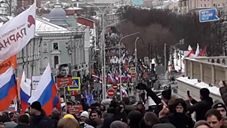The Russian military estimates that Ukraine has prepared 20 new army brigades and National Guard brigades to participate in a counterattack, bringing the total number of armed forces to 700,000 to one million. This was reported by Bloomberg, citing a person close to the Russian Defense Ministry.
Back in early April, Ukraine reported that it had prepared 40,000 fighters for a counterattack by assault squads consisting of eight units. Since then, the country’s leaders, particularly Volodymyr Zelensky, have noted that it needs more Western weaponry. But in a June 3 interview with The Wall Street Journal, the president said of the offensive, “I don’t know how long it will take or what price we will pay. Frankly, there are a number of scenarios, completely different. But we are ready”. Ukraine is “very well prepared for it”, U.S. Joint Chiefs of Staff Chairman Mark Milley told CNN two days later.
Moscow believes Ukraine has until October to make headway, with the main strike coming in the Zaporizhzhya region in the southeast of the country with an attempt to move south and eventually reach Crimea, a Bloomberg source said. In addition, he said, just before the Kakhovka hydroelectric plant explosion, Moscow expects smaller strikes in support of the main operation to be carried out across the Dnipro River.
A high-ranking NATO official confirmed to the agency the Russian estimates regarding the use of the Dnipro River as a second front. However, it is now estimated that the flooding has made forcing the river impossible in the near future. Reducing the front line is beneficial to Russia because it will make it easier to concentrate forces to prevent a breakthrough, says military expert Rob Lee, a senior fellow at the American Institute for Foreign Policy Studies. “If the likelihood of a Ukrainian operation near Kherson is now lower, the Russians can move more forces to the east”, the Financial Times quoted him as saying.
“I don’t think it [undermining the HPP] will affect the counteroffensive as such, I believe its purpose is to affect the willingness of Ukrainian society to continue to make efforts [to liberate the country]. It’s an attempt to terrorize Ukrainians just at a time when they might be feeling optimistic about a counteroffensive”, said Elizabeth Brough, a senior fellow at the American Enterprise Institute who analyzes hybrid threats.
Russia should have enough manpower, given its air superiority, to repel a Ukrainian offensive and create a stalemate on the front, a source close to the Defense Ministry told Bloomberg. So far, Russia has not been able to use the air force successfully – Ukraine chased them off its territory by effectively using air defenses, experts from Britain’s Royal United Services Institute (RUSI) noted. But during the offensive, the situation may change, because Russian planes will be able to strike Ukrainian troops from their territory, and it will be more difficult to cope with them using air defense systems and aircraft, of which Ukraine has much fewer, the RUSI warned.
As for Russia’s defense, units are now mostly manned by poorly trained and supplied reservists – though there are plenty of them, which is what the command hopes for, notes Scott Boston, senior military analyst at Rand Corporation.





